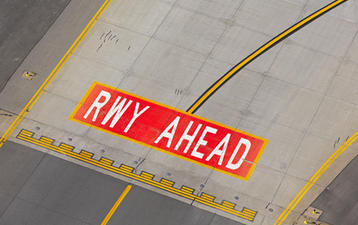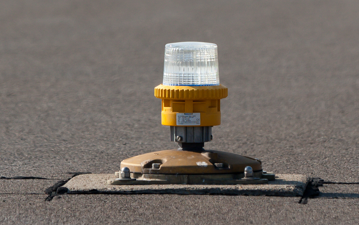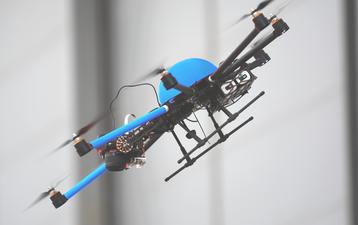Development of requirements for drone operations at aerodromes
According to a recent survey, more than 25% of the interviewed airports already had experience with drone operations for applications such as asset surveys, pavement inspections, visual landing aid calibration (PAPI), aircraft maintenance inspections, promotional videos etc.
The demand for drone operations at aerodromes is continuously growing, but many operators are facing some difficulties, as there is often no standardised approach nor safety case to enable flights over runways and taxiways, aprons and aircraft stands, passenger terminal buildings, etc.
Drone operations at or around aerodromes are subject to special conditions, but in most cases these conditions are simply not yet defined by the aerodrome operator or responsible authorities. Often, this leads to a systematic rejection of all drone operation applications, non-commensurate rules, or generates a lot of efforts to review the applications on a case-by-case basis.
An aerodrome operator commissioned airsight to develop a clear set of rules for operating drones at and in the vicinity of its airports.
airsight, as aviation safety consultant with experience as drone operator, developed these rules using a risk-based approach. After a review of possible hazards, different fly-zones were introduced, based on the risk operating a drone in these zones represents to aerodrome operations as well as taking into account other requirements (e.g. obstacle limitation surfaces, ATC CNS equipment etc.).
Then, specific minimum conditions were defined for each zone, following the principles that the high-risk zones shall have the highest standards in terms of Concept of Operations, Personnel Requirements, Operating Environment (visibility, wind and temperature conditions), Technical Requirements and Operating Procedures.
Such clear sets of rules are specific to an aerodrome and shall also take into account the national regulatory framework. These define under which special conditions drone operations are possible, and greatly improve transparency between stakeholders (aerodrome and drone operators, air navigation service provider, regulator and responsible authorities etc.).
Please feel free to contact us, if you need to assistance in developing the applicable guidelines and specific conditions for drone operations at your aerodrome.
Key Facts



